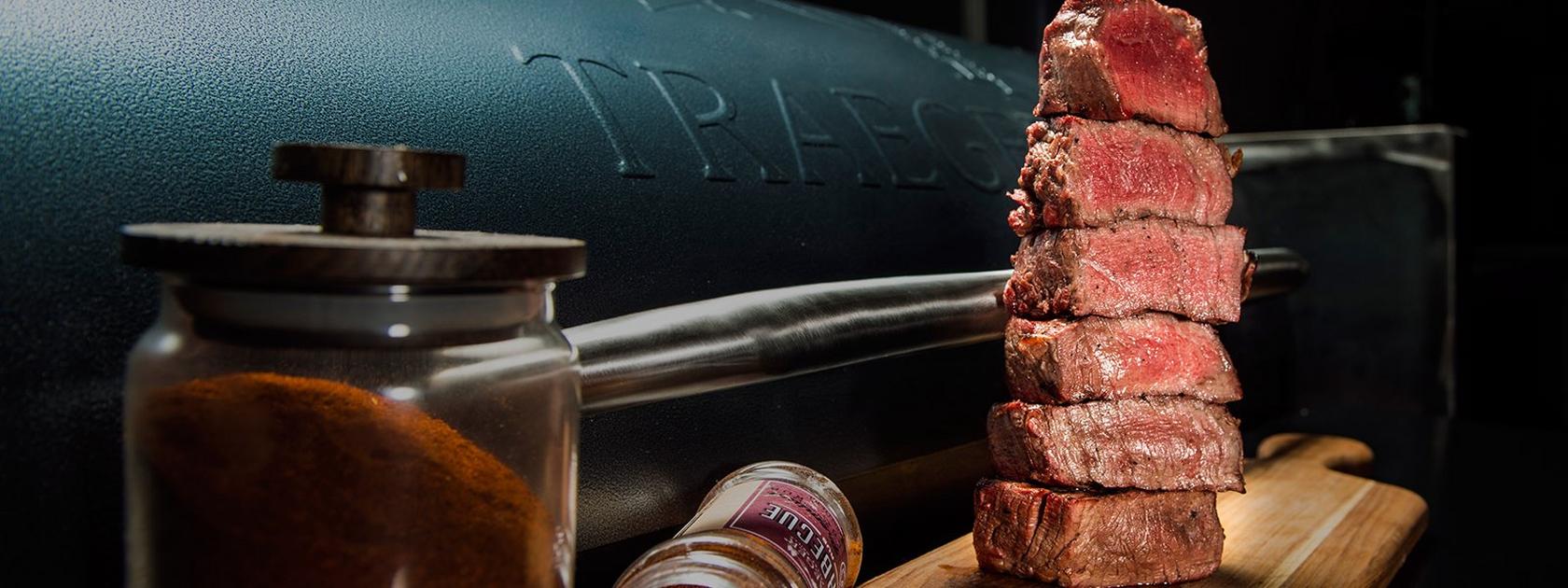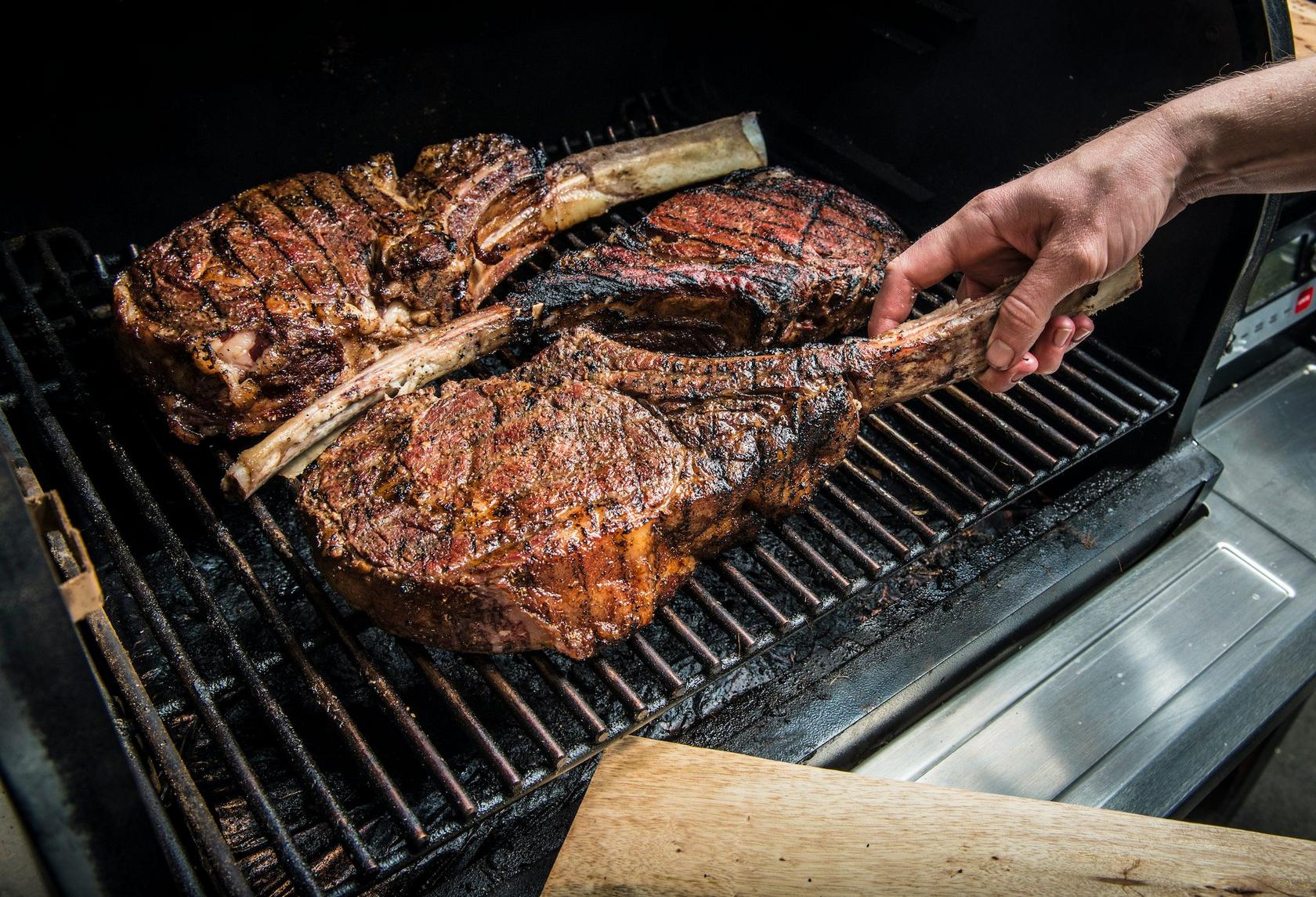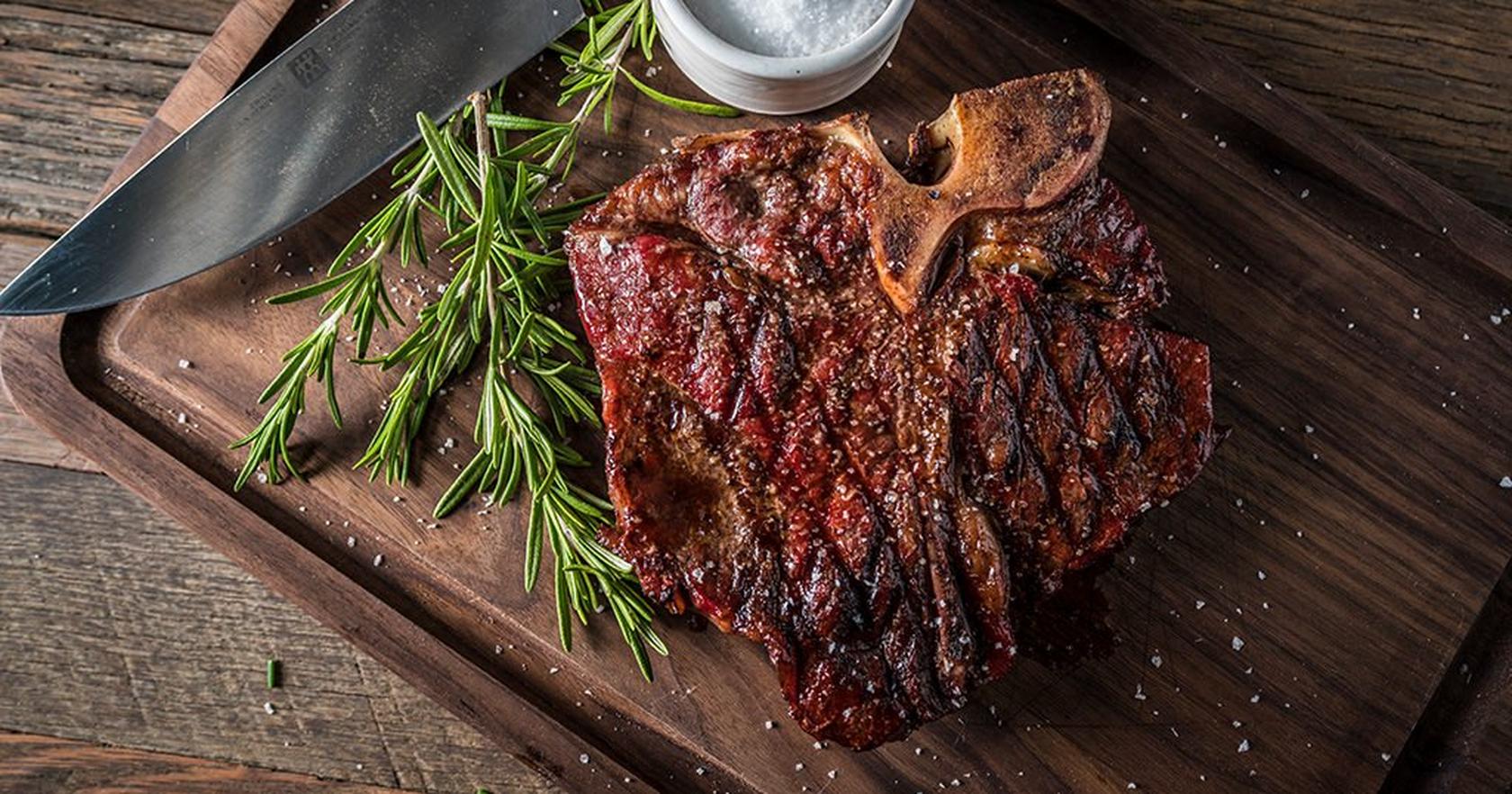
In order to get the perfect medium rare steak every time, you have to know the basics of grilling. With our expert steak temperature guide, you'll learn how to buy and prepare steak, the ideal steak internal temp, and how to grill it to perfection on a pellet grill.
Whether you like it fresh from the field or a medium rare with some pink, we’ve got you covered. We’ll teach you how to get the perfect steak temperature that fits your preferences.
Depending on your desired level of doneness, your steak needs to reach a specified internal temperature:
- Black and Blue: 115°F and below
- Rare: 120-125°F
- Medium Rare: 130-135°F
- Medium: 140-145°F
- Medium Well: 150-155°F
- Well Done: 160-165°F
- Extra Well: 170°F+
Best Steak Internal Temperatures for Doneness
The USDA says 145°F is the safe internal temperature for cooked steak, but most steak lovers prefer lower, such as 130-135°F AKA a perfect medium rare steak internal temp. The time it takes to grill a steak will depend on the thickness of the steak, the weather, and your grill, but below are some guidelines for steaks about 1 inch thick.
RARE STEAK
120-125 °F internal temperature. Just a minimal sear on the exterior of the meat. The center is still red and cool to the touch. Grill at 450°F and pull from the heat between 115°F and 120°F, for 3 to 4 minutes minutes per side.
MEDIUM-RARE STEAK
130-135 °F internal temperature. Seared on the outside. The center is pink with thin brown stripes on top and bottom. It’s room temperature to the touch. At 450°F, cook for 5 to 7 minutes per side.
A medium-rare steak is the recommended doneness to taste the meat's natural flavor. It's hot enough that the fat has melted and distributed flavor throughout but it is still juicy and tender. It’s usually how meat connoisseurs and chefs like to eat it.
MEDIUM STEAK
140-145 °F internal temperature. Seared on the outside with a lukewarm pink center. At 450°F, cook for 7 to 8 minutes per side.
Most everyone is happy with this doneness. It’s not bloody or as dry as the Sahara desert.
MEDIUM-WELL STEAK
150-155 °F internal temperature. Cooked on the outside with a warm, light pink center. At 450°F, cook for 8 to 9 minutes per side.
It’s definitely cooked and still showcases the flavor of the meat.
WELL-DONE STEAK
160-165 °F internal temperature. Brown on the outside with a mostly brown center that is warm throughout. At 400°F, cook for 10 minutes per side.
How to Measure Steak Internal Temperature
There are a few ways to judge your steak doneness: By touch or numbers.
While a leave-in meat thermometer is always a good way to check your steak's internal temperature, the pros do the touch test. Here's the general guide:
Rare: When you touch the steak, it will feel very soft and squishy with little to no resistance. If you touch the tip of your nose and compare the feeling, it's similar to that.
Medium Rare: Pressing the steak with your finger, it will have a bit more resistance than rare, but it's still relatively soft. It should feel like pressing the fleshy area at the base of your thumb when your hand is open.
Medium: A medium steak will feel firmer than medium rare. Press the steak with your finger; it will still have some give, but it's noticeably firmer. It's similar to pressing the tip of your nose.
Medium Well: The steak will feel firm with just a slight give when touched. It's similar to pressing the area right below your nose.
Well Done: A well-done steak feels very firm and has no give when touched. It's akin to pressing your forehead.
However, until you've mastered the touch test we highly recommend the MEATER so you can take the guesswork out of your cooking.
How to Buy the Perfect Steak
First, always purchase high-quality meat. The quality determines the texture, tenderness, and how flavorful the steak will taste.
The thicker the steak, the easier it is to cook to better control your steak internal temperature preference (plus it will taste better!). Stop by your local butcher shop and ask for exactly what you want, i.e., a 2” thick-cut steak. Most grocery stores stock steak that is ½” to 1” thick. Thin steak cooks faster and has less flavor.
For the very best quality, seek out meat labeled Prime by the USDA. It's not always easy to find, however. Select is the next best option.
How to Cook Steak & Grill Temperatures

The ideal temperature for grilling steak is at high-heat, between 450°F and 550°F. To achieve the perfect steak though, there are two main ways to cook: the direct-heat method and the reverse-seared method.
DIRECT-HEAT METHOD
This direct method is the quickest and well, most direct method of cooking steak. It means the steak is cooked the entire time over high heat.
To grill over direct heat, set the grill to 450 °F, close the lid, and allow it to preheat for 15 minutes.
Place the steak on the grill grate and cook, flipping the meat occasionally, until the internal temperature is a few degrees below your desired final temperature. (The internal temperature will rise a few degress when the steak is removed from the heat.) Let the steak rest for a few minutes before slicing or serving.

REVERSE-SEAR METHOD
The reverse sear method cooks the steak initially on low heat until close to the desired final temperature. Only after it's almost entirely cooked through does it get a quick sear over high heat. Reverse sear cooking helps guarantee the steak does not overcook. And, when cooking on a Traeger, infused the steak with wood-fired flavor.
For the reverse-sear method, set your grill to 225 °F, close the lid, and preheat for 15 minutes.
Put the steaks on and cook until they reach an internal temperature of 110°F to 115°F; this can take up to an hour depending on the thickness of your steak.
Take the steaks off the grill, then raise the grill's temperature to 450°F.
Alternatively, heat your Flatrock Flat Top Grill to high. Allow it to preheat with the lid closed for about 10 minutes, and put the steaks back on the grill.
They'll sizzle and brown, getting that terrific Maillard reaction aroma and color. Cook until nicely browned on the exterior and the temperature is a few degrees below your desired final temperature, about 130°F for medium rare.
See all of Traeger's steak recipes for more ideas on how to cook a steak on a pellet grill.
Pro Tip: If you want to give your steaks some extra wood-fired flavor, cook them indirectly low and slow using the Super Smoke setting.
How to Rest Your Steak
Finally, once your steak is done, let it rest on a plate or cutting board at room temperature. Let it rest for half of its cooking time, up to 10 minutes. The rest will help the steak retain its juices and give it an amazing flavor.
Now that you've read this steak temperature guide, you'll never have to worry about how to get medium rare steaks ever again.